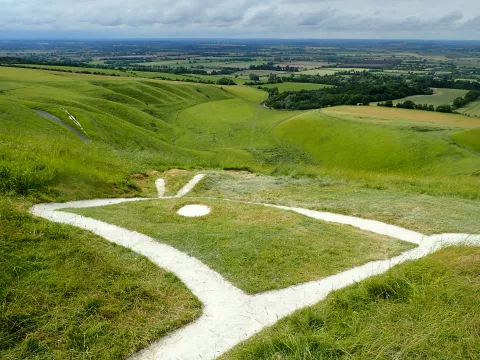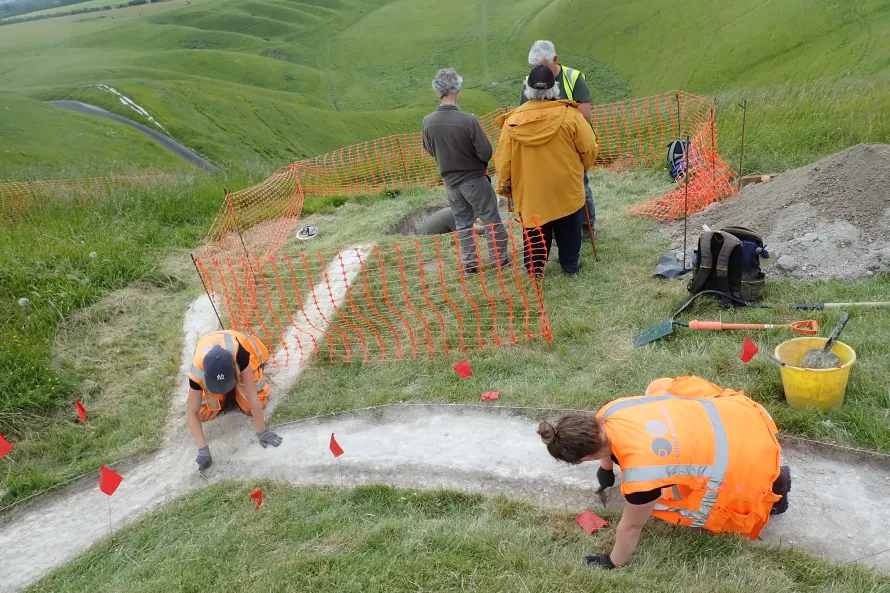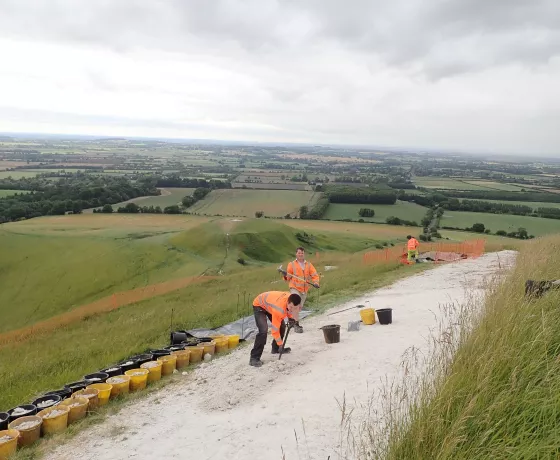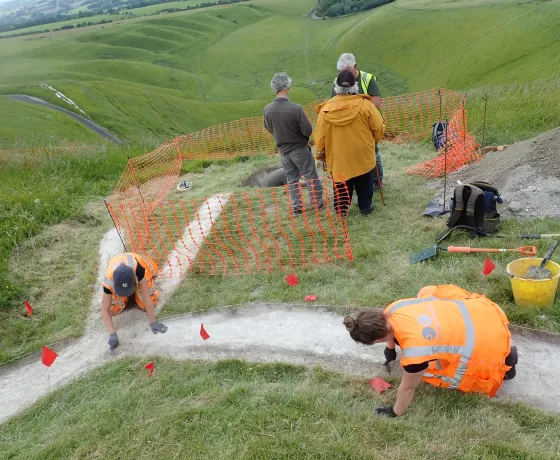‘The owld White Horse wants zettin to rights,
And the squire hev promised good cheer,
Zo we’ll gee un a scrape to kip un in zhape,
And a’ll last for many a year.
"Ballad of the Scoring of the White Horse" in Thomas Hughes’ ‘The Scouring of the White Horse’ 1859.
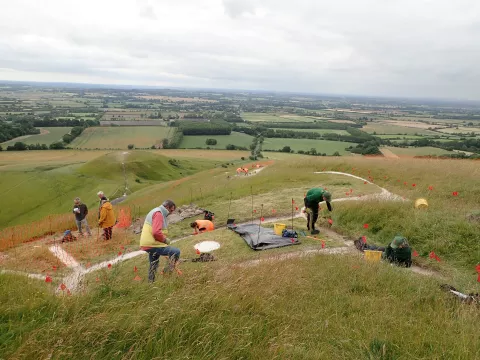
In July 2024, we went back to Uffington for another season of fieldwork. This time, the purpose was to restore the hill-figure to its size and shape of about 40 years ago and, ultimately, to make it more visible. In the last year we have agreed that the head and neck needed to be widened to reflect the findings of the 2023 trenches and drone survey. This will involve the removal of the turf to a preset outline (based on what we revealed in 2023), recording the archaeology beneath the topsoil and then infilling with new chalk. This is akin to picture restoration where minimal, if any, disturbance is made to the original paint and what is newly added can be easily reversed.
Many visitors have also mentioned the diminishing visibility of the Horse from below in the Vale. It seems the best view now is above from a drone. Centuries of soil erosion, hill-wash, has changed the profile of the hillside effectively flattening the slope that the Horse gallops across. While this build up is a boon for archaeologist since it preserves hidden layers (as revealed and sampled in the excavations of the1990s), it is to the detriment of those viewing from below.
We obviously cannot now change the slope that the Horse is framed upon, but we can reduce the erosion, slowing the buildup, and steepen the angle of the actual chalk infill of the body. This will be achieved by reducing the height of the chalk body, built up by many years of re-chalking or scourings, and which now stands proud of the surrounding turf. We will reduce the chalk down, so it is lower than the turf line and create a clear edge along the Horse’s belly (which was originally there) to slow the run-off of eroded chalk on to the slope below.
Study of the survey results also show that there has been a shortening of some legs and the tail. These will be lengthened to ensure that the Horse maintains its traditional extent. This will again be by the removal of the turf and the infill with chalk.
In the same way that we trenched the head and neck in 2023 we will undertake a similar exercise on the legs and tail, cutting slots across through the turf to establish how much the limbs had thinned and testing again the survey results.
